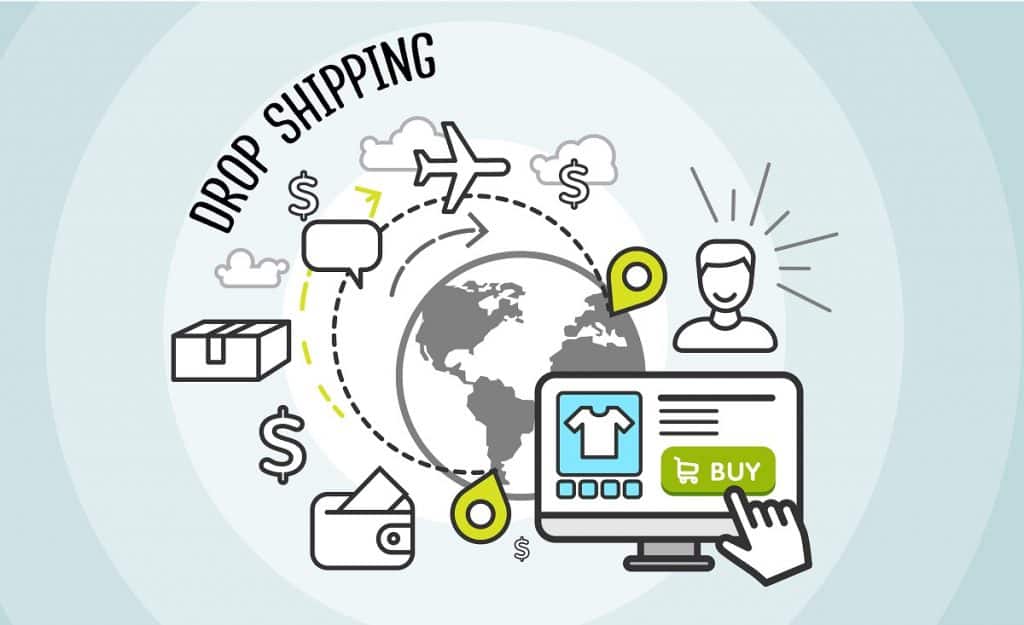Understanding the Rewards & Risks of Drop Shipping
Depending on your position, drop shipping means different things to different people. Even with the growing popularity of the method and its unique alignment with e-commerce, the risks of drop shipping are significant.
For that reason, it can be tough to tell whether the risks are worth taking on for your business. Will drop shipping be the key to growing a brand and building a base of customers? Or will it lead to unreliable order fulfillment and a reputation for failure?
Without careful consideration for your transportation and shipping needs, things can quickly go wrong. This applies to brands as well as service providers, both of which perspectives we'll explore in this article.
Dealing with Drop Shipments
The most common kind of drop shipping in the e-commerce world is where a large retailer like Amazon or Walmart accepts an order, then hands it off to a third-party vendor for fulfillment.
In this scenario, the risk lies in the fact that the retailer will typically only pay the vendor at the wholesale rate. Even with this favorable arrangement, there are also potential downsides for retailers, especially if they are established brands
The cost of fulfillment plays a key role in the pros and cons of drop shipping.
If a vendor fails to accurately measure the true cost of a drop shipment, it can leave them struggling to turn a profit on all orders of this type.
Let's take a look at some of the primary risks to vendors and retailers who are considering drop shipping.
Risks of Drop Shipping: Cost and the Capacity to Scale
The costs of direct-to-consumer (D2C) drop shipping in terms of online orders are overwhelmingly rooted in fulfillment. These activities are often one-time, high-touch activities. This means that they are also high cost, at least when compared to wholesale fulfillment and higher volume orders.
In short, the vendor is paid wholesale but incurs the full costs of B2C fulfillment. The risks of drop shipping become clear with this in mind, but there are certain scenarios in which it works.
For example, some small vendors offset this difference by handling the orders themselves. While this might work on a smaller scale, it isn't a strategy that can be sustained as a business grows. Managing fulfillment on this individual level usually masks a key cost, the vendor's own time, which is in increasingly short supply as a business gets bigger or when peak season provides a surge in demand.
Unless you properly value your time and factor that value into your drop shipping calculations, it's easy for the disadvantages of drop shipping to overtake the positive aspects. When you try to grow, that gap becomes even more apparent.
Scaling up any kind of e-commerce operation often involves outsourcing order fulfillment. Paying a third-party to provide fulfillment services makes the true cost of filling an order clear (and the economics a lot more challenging!)
For brands, the challenge often lies in locating a reliable supplier, who will provide drop ship services at a competitive price and maintain the brand's high standards.
The gap between keeping fulfillment costs down and adding sufficient markup to the product to make it profitable for the drop shipper can limit the availability of service providers in some sectors.
The low barriers to entry with drop shipping - no inventory, few start-up costs, etc. - also mean that vendors can come and go with relative ease.
If a market sector stops being profitable due to increased competition and cost, providers will simply move on.
This churn has the potential to damage brand reputation if it leads to fluctuating levels of service.

Rewards of Drop Shipping: Build Your Brand
Despite the inherent risks covered above, there are elements of drop shipping that can provide significant rewards when the service is implemented well.
First, we have the low barriers to entry mentioned earlier. Vendors do not need to buy and hold inventory, as they only ship when a product is ordered.
With warehousing costs currently at a premium and the risk that comes with keeping a large amount of stock on hand, this advantage cannot be overstated, especially for new businesses with limited capital.
For the same reason, drop shipping is also a useful way to experiment with new products. Retailers can test new lines without having to purchase large volumes of product, then expand the most successful items to a more cost-effective fulfillment model.

This can also help new businesses to develop a brand, without all the overheads and infrastructure that are usually associated with making a name for oneself. Of course, this assumes everything goes smoothly, meaning the vendors chosen for the drop shipping function are reliable and stick around long enough to build a brand reputation.
When implemented in a strategic way that plays to the strengths of the model, drop shipping can be a great way for new businesses and growing brands to establish a foothold in their sector.
That said, the risks of drop shipping are there for all to see and must be carefully considered before basing a business on this fulfillment method.
